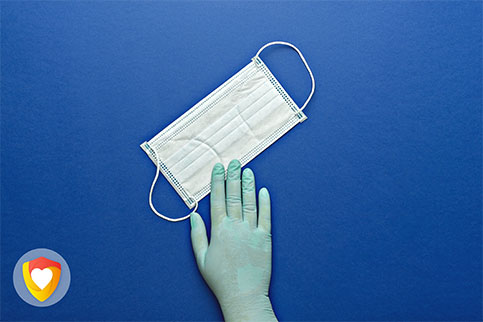As I write, the United States is bracing for an unprecedented surge in COVID-19 deaths. U.S. Surgeon General Jerome Adams warns that the coming week will be our “Pearl Harbor moment.” Only this time, the pain and shock will have a direct impact in communities across the country.
Recent modeling by the University of Washington’s Institute for Health Metrics and Evaluations (IHME) has predicted that even with mitigation measures like social distancing in place, 100,000 to 240,000 Americans could die of COVID-19. Some scientists believe this is an overestimate. But most experts agree that we can expect to see a surge in COVID-19 deaths in coming weeks.
While this news is sobering, there’s also reason for hope.
A surprising reversal
A month ago, Washington state was the epicenter of the COVID-19 pandemic in the United States. We were home to the first U.S. case (Jan. 20) and the first death on American soil (Feb. 29). Cases have been rising ever since. Healthcare providers have been conserving personal protective equipment (PPE) and supplies to prepare for the inevitable disease peak, which IHME has forecasted for April 19.
However, the expected surge in cases hasn’t materialized. Two weeks ago (the week of March 23), hospitalizations due to COVID-19-like illness declined by 20% in Washington state. This ends a monthlong rise in admissions. These numbers suggest we’ve successfully flattened the curve. The models agree; IHME is now predicting 20–30% fewer hospitalizations at peak than just a week ago.
I’m seeing evidence of this shift at my own hospital. A few weeks ago, our ICU had so many patients on ventilators that they spilled into the step-down unit. But two to three weeks after social distancing measures went into effect, this volume began to contract. Today, we are managing all ventilated patients within the ICU. And the numbers continue to fall.
Quarantine works
What’s making the difference? First, it appears that our efforts at social distancing (which began early in Washington) haven’t been in vain. When the Institute for Disease Modeling (IDM) used Facebook data to track mobility, they found that Seattleites appeared to be avoiding commercial areas. In late February, the IDM model suggested that one infected person spread the disease to 2.7 people. By March 18, thanks to social distancing, that number had dropped by half to roughly 1.4.
A word of caution
While hopeful, Washington’s experience underscores the importance of continuing infection control precautions in both community and clinical settings. If society takes its foot off the gas too soon, we could see a disease resurgence. This especially holds true for healthcare providers on the front lines of the pandemic.
Providers often feel uniquely vulnerable to infection. However, we know that PPE, when worn and removed properly, is very effective against COVID-19. There are no chinks in our “armor.” We just need to wear it all the time—ideally universally masked through our entire shifts. This means protecting ourselves in nonclinical areas like break rooms and also while interacting with fellow providers and staff.
Another way we can protect ourselves is by practicing meticulous hand hygiene. In addition to PPE, hand-washing is our best weapon against a virus that can live on surfaces for hours to days. Yet research suggests that hospital-based providers are about 50 to 60% compliant with hand-washing guidelines. (By contrast, commuters using New York train station bathrooms wash their hands 80% of the time.) One-hundred percent compliance would improve safety, not just of patients but also of providers and their families.
Hope . . . and keep your foot on the gas
Washington state’s experience should give healthcare providers across the country reason for hope. We are seeing that behavioral interventions like social distancing work, and that predictive modeling does not write our destinies in stone.
At the same time, these gains were likely due to early and stringent precautions, including a government lockdown, appropriate use of PPE, and early implementation of screening and telehealth procedures at hospitals.
As we hope, we must continue to follow strict infection control procedures—perhaps for several more months. While wearing a mask and eye protection and frequently washing hands through an entire shift is burdensome, doing so consistently is the surest way to avoid infection. And while our new normal of shuttered restaurants, closed parks, and shut-down schools is challenging, we need to keep pushing forward to flatten the curve and return us all to normalcy faster.























